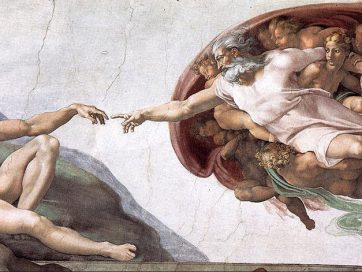
Trends and possibilities are quickly becoming a reality in the world of marketing, due to the need for meeting the ever-increasingly sophisticated desires and priorities of consumers.
Rodrigo Rocha
Imagine the strength of a tsunami — a gigantic wave approaching with brutal strength, capable of destroying everything in its path. Usually, when you realize there is a tsunami approaching, it is already too late to save whatever might be in its way. Another characteristic of this phenomenon is that it reveals weaknesses in the defense strategies of the structures it destroys, requiring a new approach in rebuilding those structures. Over the course of the last century, the world of marketing, advertising, and communications has experienced several tsunamis: cinema, radio, television, satellites, cable TV, videotapes, Internet, cell phones, social networks, and smartphones. The growth curve of this emergence, spreading, assimilation and appearance of new behaviors has been happening in an ever-faster rate — television took forty years to reach the entire planet, while smartphones did so in less than ten. Different communities within Africa, Asia, and Latin America literally jumped from drum communication to 3G Internet overnight. The increase in the frequency of “behavioral tsunamis” requires marketing, advertising and communication specialists to create new structures with increasing speed and on a global scale. The experience of recent years has shown that it is no use trying to rebuild what the waves washed away. The path is finding new ways to ride the waves of new behavioral tsunamis that will have a global impact.
Consumer behavioral changes are forcing marketing-thought to evolve. Today, the competition for audience attention has escalated both vertically and horizontally. In the past, marketing only sought to draw attention and send an incentive to buy a given product or service. Now, it is necessary to establish a dialogue with the consumer and show them that the values of the company of their choice, match with those they have for their own lives. Today’s consumer only chooses a given brand if it represents something they believe in — in other words, the brand-consumer relationship as managed by marketing has become deeper. As if such a vertical challenge was not big enough, there is also the horizontal one: each company not only competes against its counterparts, that is, those that belong to the same category of consumption, but with all the others as well. The share-of-wallet management process has changed because people’s notion of value, as well as their expectations, have changed. Just ten years ago, almost all families, from all social classes, had the desire to buy a car. The competition for each brand was its counterparts. But things became more complicated, and the amount invested in a car began to be questioned, because it could be used to pay for other family initiatives —related to other categories—, such as holiday trips, specialization courses, student-exchange courses for teenage children, refurbishment of the kitchen, new furniture, or loans for buying a new house. Yet the competition, which already seemed fierce, intensified even more. There is an entire generation (Generation Z) who does not want to own a car for several reasons, ranging from environmental impact to aversion to property. Even generations that grew up wanting to own a car (like Generation X) have done the math, and many of them prefer to use Uber so that they do not have to deal with the stress of traffic, look for a place to park, or even deal with the expenses related to owing a vehicle. That is, in this case, the competition among automobile manufacturers companies takes place at several levels: with the other automobile manufacturers, with other categories of products and services, and even with new concepts of mobility and property.
This type of concept revision by consumers literally reaches across all categories of products and services and poses challenges of epic proportions for marketing professionals. As Darwin has shown, evolution is often the result of overcoming challenges, and the species of marketing professionals have gone through interesting metamorphosis to face the changes in their environment.
Observing the list of speakers in events related to marketing and innovation shows that positions have changed, and that what not so long ago used to be considered state-of-the-art thinking in the marketing world, now is already a reality in many companies. Positions involving expressions such as “growth hacker”, “costumer experience”, “storytelling”, “sustainability” and “shared value” have grown in number in companies that are leading the way in marketing thinking, and this fact proves that the “future” that used to be referred to three or four years ago is finally here.
Until recently, intervals of thirty-six or forty-eight months were considered “medium term”. Now, those periods are already considered “long term”, due to the rapid evolution of concepts, attitudes and habits of consumers. The influence of digital social media combined with the spread of cell phones and a reduction in the price of the access to high-speed broadband connections has boosted the transformations in people’s behavior around the world. Less than five years ago, in marketing events, it was argued that the cell phone would become the “first screen” of communication. Today, that trend is not only consolidated but has already been assimilated in all strategies. There is no longer anyone who can say that this equipment has not become an extension of the human brain.
Disruption, evolution, empowerment and new dynamics
The expansion in the offering of information has been causing an increasingly critical and demanding attitude in the consumer — and that is changing everything in the world of marketing.
Today, the strategies to create relevance in messages and consumer experiences are increasingly futuristic in character, and therefore they demand marketing professionals with new skills.
A survey by Accenture 90% carried out among CEOs and CMOs in 2018 found that respondents believed that the role of marketing will change drastically over the next three years. In this same survey, 75% of the CMOs admitted that traditional formulas were no longer as effective as they used to be. By looking at the new generation of disruptive companies, one can realize that they have been delivering more relevant consumer experiences, which yielded greater success among consumers.
All the companies deemed disruptive in recent decades —from AirBNB, Amazon, and Apple, to Waze, WhatsApp, Microsoft, Netflix, and Uber— have in common the same attitude: to empower the consumer. By providing the consumer with experiences that widen their power of choice, increase their access to products or activities, and take into account their habits, preferences and even dreams, these companies win the consumer’s heart in such a way that they can modify the consumption parameters of the categories in which they operate, and even those of other categories. This is the case with Uber, which has affected not only the taxi driver market, but it also had an impact on the automobile market, parking lots and even on the bars and restaurant sector. And, as if this cross-market impact were not enough, several of them offer even lower costs. It is interesting to observe that when a company modifies a market, it is only due to the fact that in its value proposal, it has the empowerment of its potential customers as a premise. All of these companies place the consumer at the center of everything they do and focus on offering them an empowering experience.
During the 1980s, the launch of Windows by Microsoft was revolutionary because it made PCs accessible for everyone. The company acted as Prometheus, the mythological hero who stole fire from the gods and brought this technology to mankind. Thanks to this software, people have the power to use personal computers, which has allowed them to save time, increase productivity and even be more creative. The program brought relevance to the hardware and made people understand the usefulness of this equipment. Such a notion of value, and the sense of power that each user discovered, made PCs migrate from the office to the home — and the rest is history. This is an example of the creation of a whole new category of consumption, and of new dialectics in people’s behavior. However, the disruptive behavior generally occurs in very old and consolidated categories.
The lodging industry is an example of this. Inns, bed and breakfasts and hotels have existed since the dawn of time. The industrial revolution made hotel chains possible, and globalization made this market gigantic. However, while the chains built large properties, many people began to think that the daily rates were extremely high, and that they excluded thousands of potential travelers. The launch of the AirBNB platform completely changed this industry, because it gave every person the possibility to be a hotelier, and gave travelers access to more affordable prices or, in cases where the rental value was as high as that of a hotel, gave them the feeling of being a “citizen” in a city — and not just a guest. In fact, AirBNB allows the customer to literally “travel” across its staying experience. For example, when searching for a stay in Cannes, the options range from mountain houses, apartments downtown or in residential areas, and even accommodation on a yacht in the port. If someone wants to live the experience of staying on a boat, the AirBNB platform not only makes it possible, but it also makes it affordable with just a few clicks. In the past, finding a way of staying on a sailboat was too complicated for a layperson. Nowadays, you are only a few clicks away thanks to the transformative performance of a company. By providing the customer with superpowers, the company increases fidelity on such a strong and evident scale that it goes far beyond the traditional marketing strategies taught at universities.
Bringing comfort and added value to the customer is not a new thing. It is in the most classic marketing lesson. The question lies in how it is done. Netflix went into the movie rental business in 1997, a time when the market was ruled by Blockbuster, a huge company that kept growing fast and destroying the independent rental companies. Anyone that got into that market at that time would be doomed and, if successful, would remain in a distant second, far from Blockbuster in terms of volume and sales. From the very beginning, Reed Hastings and Marc Randolph’s (Netflix founders) proposal was an online service for movie rental. But, at that time, connections were slow. So, in 1998, they launched a site that allowed for people to request DVDs which arrived by mail. The following year, they created a monthly subscription that offered unlimited DVDs rental. That was already a bold innovation before the business model that Blockbuster and other rental companies had. Netflix was ahead because it offered a convenience-variable and added value for its customers. The proposal was that the person could request for a movie online – i.e., without leaving their house, in the comfort of their home, without having to put on shoes or a jacket, or going to the rental shop to choose what to watch. The subscriptions success was such that Netflix offered itself to Blockbuster, which did not want to purchase it because it did not believe in its business model. Besides focusing its strategies in customer convenience, Netflix continued investing in innovation. The company believed that streaming connections would become more efficient, and prepared for just that, as it realized that said convenience was important for the consumption experience. The market also understood that. In 2002, when it had six hundred thousand subscribers and eleven and a half thousand films in its catalog, Netflix’s shares started being traded in Nasdaq, a move that allowed the company to raise US$ 82.5 million capital. In 2010, the year in which Blockbuster filed for bankruptcy in the United States, Netflix began its international expansion: Canada, Latin America, Europe, Australia, New Zealand and Japan. The results with consumers were so encouraging that the streaming company started investing in the production of original content in 2013, when the “House of Cards” series premiered. It adopted the policy of including productions from several countries in its catalog. Thus, in only five years, it became a relevant competitor of Hollywood studios and Disney. Now, the only place where the company is not present is in countries where the presence of American companies is forbidden: China, North Korea, Crimea and Syria. It is currently estimated that it has more than 90 million subscribers and its Emmy award collection continues to grow. This shows that betting on the customer’s convenience is the most adequate strategy.
Another characteristic in common among these giants is their ability to understand that technology only makes sense when it brings pleasure to people. High-tech needs emotion, the high-touch, so it has value for the consumer. The great wisdom of Apple was turning people’s relationship with their phones into a playful one. Because of that, it added music, quality photos, access to the Internet and smartphone games. And it went even further: it created an open platform so that anyone could make an application available – something very clever because the use of applications makes the cell phone even more indispensable for the user.
It is obvious that these disruptions in the market imply a technical matter related to equipment evolution, but that is only one element in an equation in which the most important part is the consumer’s experience — and that is the area of marketing specialists. Understanding the fast evolution of the target audience’s behavior is in marketing professionals’ job description and, because of that, it is essential to have a holistic view of the market and a deeply humanist perception. Paying attention to people helps the company to adapt itself quickly, which allows for protecting its relevance or even increasing it and, by doing so, maintains growth rate. The example of Netflix demonstrates this well. The presence and the relevance of the brand in people’s lives around the world has continuously grown for two decades.
Great powers and great responsibilities
Cases such as this one explain why CEOs’ expectations are so high in relation to marketing, and that this department be highly active in providing support for the growth of the company. It must be mentioned that the role of marketing has changed a lot in recent decades. In the beginning, marketing existed to encourage sales. Afterwards, it began to be a kind of vitamin for brands. Today, marketing is one of the key guiding forces in a company’s development. However, as Spiderman’s uncle would say, with great power comes great responsibility.
Every penny invested in marketing is analyzed based on performance. One of the most famous anecdotes in the marketing world recounts that half of the investment in advertising will not reach the target audience and that the problem is knowing which half is being wasted. With the appearance of performance media – something that was only possible with the dissemination of digital media use – that anecdote is (literally) not funny anymore. The measuring of actions is decisive for carrying out investments, and money is only invested in things that prove effective with the target audience.
The role of marketing still is creating value for consumers, considering their needs and increasing their desire for buying. The question is that what people value is constantly changing. New cultural, social, moral and ethical standards are appearing all the time. In this constantly changing context, the view of marketing needs to be reinvented — not regarding the role inside the company but regarding the person responsible for identifying changes, for having the ability to face reality and for adopting the corresponding attitude.
Due to a childhood obesity outbreak identified in Brazil – one in every four Brazilian children was deemed obese –, Amil took a stand. It created a broad campaign, which lasted from 2014 to 2017, which included awareness-raising actions for Brazilians in general, and more specifically teachers, and health professionals. It also engaged children in a playful way by using Disney characters to raise awareness about health eating habits. In addition to directly
people – both regarding the financial capacity to be an Amil member but also with society in general – the campaign so impactful in terms of awareness that company acquired prestige among several segments in society that are directly affected by issues like children’s health care. It also generated indirect consequences. Even those who did not have an obese child in the family or did not have children in the family began to dialogue with Amil because they acknowledged the company’s generosity when using its advertising space to the benefit of society. That attitude caused a readjustment in the image of the company with the consumer. While the media portrays health insurers as villains and enemies of family finances, Amil, with this campaign, showed that it is genuinely interested in people’s health. That change in discourse provoked an expectation in the target public in relation to the company’s positioning in matters of public health. Because of that, the following campaign, which was launched for the company’s forty-year anniversary in 2018, dealt with a matter once again relevant to the sector: the question of correct utilization of the health system. With the topic “The right care to live your best life”, the campaign deals with matters such as the unnecessary use of health services, the excess of exams and self-medication. By means of video ads and channels on social networks, the company continues to dialogue with the consumer about relevant questions related to the matter of health. The consumer has a clear desire for a quality conversation with brands about reality. Consumers who are of the social networks and smartphone era are increasingly critical, proactive, and committed. They want to see results.
Transformations are fast. Sometimes, a campaign going viral is enough to make a decades-old habit go completely out of style. An example of that was the campaign against the use of plastic straws that was carried out in Brazil in 2018 – it was posted on YouTube on June 19, 2018 and is quickly going viral. Many people immediately stopped using plastic straws and companies – diners, restaurants, bakeries and even salespeople on the street – that offered straws starting being questioned and criticized. What used to be considered a hygiene-related product, is now deemed a significant polluter, a destroyer of the environment and a deadly threat to marine fauna. As a product category, it went from a symbol of modernity and entertainment to a villain threatening the planet. The marketing professionals working with straws had to act quickly. Some began to offer paper straws – considered quite chic –; others train their teams to inform customers that the company uses biodegradable straws. Still, many customers are suspicious.
Yes, instant, viral and global communications generated by broadband Internet, the cell phone and social networks is causing immediate change. With the flow of communication, marketing is now being used to promote some of our most important values, causes and concerns as a society — as the case with the campaigns against child obesity, the misuse of health plans, and the use of plastic straws.
The social dimension of communications proves to be definitive evidence that marketing is an increasingly complex activity. We need more than just sending a message; the current moment requires companies to take a stand, to show their values, to talk to society. No longer can people be alienated. If the advertiser does not pay attention, if it is not constantly reinventing itself, if it stays in its comfort zone by doing what it usually does, it runs the risk of not being able to get the attention of that new consumer, or of turning the consumer into an enemy.
The audience is in control and wants to dialogue
It is important to remember the main purpose of marketing, which is creating relevance for brands and products while doing so in line with what society wants. Many marketing professionals are amazed at the possibilities of technology and forget that what moves people is the emotion transmitted by content. It is therefore a mistake to think that media outlets are more important than strategy.
We are living in an unprecedented moment in marketing history. For the first time in history, the unidentified mass of marketing message recipients (also known as target audience or audience) is in control. They’ve became broadcasters of content, they are spokespeople, opinion leaders, and social networks and the media are the perfect place to promote their ideas. That gives them power. They are no longer a passive part of the relationship. Nowadays, the consumer has an active voice and that change directly affects marketing work.
Peter Drucker, in the book The Practice of Management, defines: “Marketing is the distinguishing, unique function of the business, which consists of positioning its business based on the market, from the consumer’s point of view, from the perspective of people you want to make aware, so that they become your potential customers, so that they become loyal customers”. You can see the definition remains the same. What has changed is the scenario.
Google conducted a study called “Zero Moment of Truth” (ZMOT) which shows that the purchase decision begins with questions about the product or the price on the Internet. Before buying something, people check the reputation of the product or service they want to purchase within their network of contacts. That behavior takes place when there is no marketing planning. It is a spontaneous and proactive attitude by the consumer. For the marketing professional, there is nothing left to do but the most obvious thing: being careful so that the image of the product is criticism-proof and paying attention to comply with the expectations of consumers who have already experienced the product or service, because they are the ones who will bring in new consumers.
People are increasingly more open to establish a relationship of proposal identification. We will see more and more brands expressing their point of view on things. That environment has caused companies to engage in mass super-segmentation, similar to companies in Silicon Valley.
Joining digital capabilities with the ability to understand human beings will be essential to marketing in the future. Because of this, in order to be innovative right now, we must respect the classical premises of relevancy, of doing a good job with the basics, of being sympathetic and of understanding how technology can enhance solutions, and always placing the consumer at the center of the strategy.
Therefore, one of the most evident trends in the market nowadays is striking a balance between universal marketing (messages for large media companies) and individual marketing, where it is possible to create more customized messages. In that process, it is essential to be very honest because the consumer is increasingly present and paying attention.
Truth, transparency and attitude create results
Several old-fashioned strategies have damaged credibility. An ad with discounts of up to 70% aimed at generating a purchase impulse causes an immediate sense of distrust. Warning signs appear in the consumer’s mind as they think “for 70% is must be low quality…” or “…they’ve marked up the original price and then advertise a discount…”. Over the years, consumers have become hardened by the actions of irresponsible marketing professionals. Ways of winning consumers over must be adapted to new societal realities. The persuasive messages or even so-called false advertising are no longer part of that current reality. Consumers perceive and rejects such messages. What used to be considered tasteless is now considered a moral affront. Tolerance for error has significantly decreased.
But that does not mean that advertising has lost its function. Audiences continue to react positively to good creative work. People love fun ads, those that make them laugh. Everyone loves to see a store with a unique design or new technologies which connect us to the world and with others. All this is because of marketing, which creates value to serve the constantly changing needs and desires of consumers.
The consumer’s influence is increasingly more important in research and development projects for new products and services. Because of this, it is essential that marketing departments are connected to sales, services, finance and IT departments. There can be no barriers between these areas. There must be rapport and synergy among marketing and other departments in the company. As marketing department strategies have currently been ratified by a solid numerical database, old perspectives stating that marketing opinions were very subjective or intuitive are no longer applicable. Because of this, marketing contribution to other departments in companies has become more important and is already considered fundamental. For example, the relationship between the CMO and the CFO has become more critical and, at the same time, more beneficial.
The relationship with IT is increasingly more relevant and interactions between the two areas is more and more intimate, as marketing requires connection with technology to improve and interpret Big Data.
It is essential that the information collected is correctly interpreted, that it is translated into learning about human behavior. This is a huge and complex task. Because of this, there are still relatively few companies that are engaging in such integration. But the desire for going down this path is big. According to a survey by Nielsen, 79% of companies expect to invest more in marketing analytics in the next twelve months.
Just as IT and finance departments began generating essential elements for marketing strategies, they must be aware of the fact that marketing professionals know how to reach the ever changing expectations of the consumer by means of the creation of increasingly relevant experiences and, therefore, serve their aspirations. Today, marketing is increasingly more horizontal and mixed with other areas at companies. After all, this area is connected with the moment of truth of consumption, which generates the moment of sale.
How to make history
For decades, people thought that what generated the magic of sale were words. The ability of marketing professionals to tell a story that, even if untrue, was well-told, was celebrated. If the script was attractive and plausible, it was fine. The search for the truth was for journalists. Now, this vision is no longer enough. The close examination by consumers and their suspicion cannot be fought only with words; the company’s actions must be acknowledged. After all, what you do makes you what you are. Apple does not say it is innovative; it has presented disruptive products and concepts for decades. Google goes further and says that it is a new economy company; with its communication, with its choice of the locations where it places its offices, with the decoration of its spaces and with the type of person it hires, it shows that it has a state-of-the-art vision. Amazon shows that it sells and delivers from A to Z both regarding the brand and the reality. Because of that, the power of storydoing is argued against that of storytelling. Telling a story is only valuable when you make history. Nowadays, consumers do not want to hear a bedtime story: they want to see great acts, they wants to see boldness. They want to see companies stealing the fire from their gods and giving more power to humanity. Society today has a great desire to build a better world. More and more people are concerned about their footprint on the planet, with the waste they generate, with where everything they consume wind up.
Companies that defend the “triple bottom line” and are socially just and environmentally responsible, in addition to being profitable, they tend to win over the loyalty of consumers. A quick walk by display racks in the supermarket shows just that. Some years ago, eggs were divided according to color and size. Now, egg classification is connected to how hens are treated. Eggs are cage-free, from chickens that eat organic food and eggs, or from free-roaming chickens. The result is in the taste. Eggs from happier chickens taste better. Considering this, the fact they cost double stops being so important. This is a clear example showing that people are willing to pay more for products that meet their life concepts in a better way. Those who do not pay attention to that tend to disappear from the market. We need to be alert regarding the elements that create value, those capable of increasing the relevance of a brand with the consumer.
For example, people’s relationship with Waze is valued because the application has a clear impact on the quality of the experience of city driving — and it helps to save time. Waze has eliminated the uncertainty about what road to take to arrive somewhere. The person who has the application feels like the lord and master of any city. That is empowerment and people value that. That ability of having an effective impact on someone’s life happens with many of the most valued brands around the world today, such as Apple, Uber, AirBNB, Netflix, YouTube and others. This provides us with a lesson: we need to generate value for people’s lives — to give them what they value, such as more time, more safety, more access, or all of that at the same time.
Companies need to stop just selling things. Now, they have a bigger challenge, which is generating value for society, in a wide-reaching way. I.e., brands must assume their role as protagonists in the building of the future of their markets and of the planet.
Some companies, such as Coca-Cola, have a department that only works on shared value. That concept of “shared value” was created by Michael Porter and Mark R. Kramer and was described in an article for the Harvard Business Review. In it, the authors declare that the narrow idea stating that creating value means increasing profits in the short term is completely wrong and obsolete. Their proposal is that companies start investing in the improvement of the entire ecosystem in which they participate. Nestlé did that with its production chain by offering technology and education to improve the quality of raw material.
But how can we determine which is the correct path? What are the benefits that must be adopted first? With eggs, what is the right path: cheaper eggs or happier chickens? The answer to that lies in understanding consumption trends.
Numbers transformed into emotions
If a company invests in understanding its consumer deeply, it will know what the best strategy is. Creating a strategy is simply about making choices and the compass that always guides said choices is the customer. The good news is that digitalization of relationships and Big Data allow for marketing professionals to have access to more accurate and more interesting data on people’s behavior. Information will increase and data will be better structured and in real time.
But the challenge of Big Data is having Big Feeling. Information is becoming more available on the network and professionals have never had this kind of access to it before. But the human factor is the one that will make the difference. It’s about having the sensibility to perceive what consumers want — behind the numbers —, having the creativity to understand the beauty in messages that consumers are sending through the numbers, and looking for the connection with people in all those numbers.
It is important to make it clear that Big Data itself is useless. It only has a strategic value when we can analyze and interpret the data to quickly generate relevant ideas. Marketing needs to be in real time. It has to understand the consumer and act accordingly.
With data, we start working not only with final numbers, but also with the method of measurement both in quantitative and qualitative terms. From understanding of said numbers, learning happens. The process with Big Data must be dynamic: building, measuring and learning. Always, always, keep in mind that behind those numbers there are people with habits and feelings. The first revolution was technological, the ability to have those numbers; now, the revolution needs to include the human element. High tech is worth nothing without high touch.
Marketing transformation will undergo a deeper reading by consumers, whether individually or in society, creating and recreating new forms of value for a highly volatile and dynamic culture such as the one we are living in.
Communication must necessarily be increasingly customized and arrive at the correct time. It is like the scene in the movie Minority Report, in which Tom Cruise goes into a GAP store and is immediately bombarded with clothes offers in his size. Or when a consumer is looking at the appropriate application in a supermarket and sees offers for products she always buys (thanks to Big Data). Collaboration between the company and the customer is what will provide the tone of marketing in the future. By all means, the concept stating that the customer is the passive party must be reviewed. Today, they are an active party and demand dynamism and loyalty of the companies they relate to. They want an open a dialogue.
Brands must develop quality content and distribute them in an increasingly clever way, being part of people’s lives and not interfering with their daily routines. Today, we have to sell proposals to be exclusive and, when we advertise, even when not tied to a sale agreement, we have to say something that is capable of touching the consumers’ hearts and minds, being transparent and sincere. Not being invasive and finding the right approach is essential.
After all, the consumer now has the power to block the advertising messages it does not want to see. More than 198 million users blocked advertisements in 2015. That is estimated at approximately US$ 22 billion dollars. Therefore, to have good results, the marketing professional now needs to be a scientist and understand the numbers and the impacts of technology. They have to be an artist and able to provoke positive emotions, while being an activist in the sense of being aligned with the evolutionary desires of society. Marketing companies and professionals will have to understand that they need to be open source: a professional that needs to be open to being updated. In order to be effective, the marketing professional needs to be a specialist in experimentation. The internet has cause people to develop a hacker mindset, which is based on testing and learning.
The current marketing professional has to be both creative and analytical. They are a mixture of art and science, subjectivity and objectivity. The time has come to break through the barriers between reasoning and emotion and we understand that marketing, as well as other areas, have to be comprehensive, respecting creativity as much as the analytical function of data processing.
A new professional for new times
This transformation is already being clearly delineated and some trends are being established with more and more strength in state-of-the-art companies with names that may seem strange right now, but will be commonplace and known by all in the future.
One of these concepts is that of “Think Thank”. The expression efficiently describes the area that, in addition to receiving surveys conducted, uses AI to cross information and to better understand its consumer, to generate campaigns with more effective results. Specialists who observe consumers, such as futurologists, cool hunters and trend setters, are responsible for identifying new opportunities for companies through reading of trends and new sector and consumer behaviors.
Other professionals who are increasingly catching the attention of recruiters are the Growth Hackers, who are professionals who combine technical knowledge about computing with the creative boldness of marketing. They create and test new ways of marketing to help develop new products and launch them in the market. Their work is based on conducting tests and identifying the most efficient strategies.
At this point, Customer Experience specialists enter the scene; these are professional who measure the experience the customer is having and design ways of connecting the company to customers in a more customized way, many times combining digital strategies with physical experiences.
However, since being digital and physical is not enough — as consumption actually has an emotional origin — companies are working on storytelling and, because of that, hiring Chief Storytellers. These individuals are like Yodas, possessing knowledge about the company’s Unique Value Proposition and working to reinforce its central message in a more emotional and appealing way. It is worth restating that the storyteller needs storydoing in order to have something to say.
Finally, Sustainability specialists — who work from a Shared value perspective — complete this new model marketing team. These individuals are people who look at the entire chain and for ways of improving processes, products and communications. Their function is helping the entire chain as it relates to training and, by doing so, stimulating growth across the board. People want to identify with the brand and to help society. Because of this, demonstrating values is very important for brand prestige.
Therefore, when you look at thought leaders in the marketing world and you see that many of them have positions with original, different and innovative names, you realize that this is just another piece of evidence showing that marketing has changed, that it is working from new premises. New behavior trends imply that marketing professionals must learn how to “ride waves” and not be married to old concepts and be “stuck in the sand”. Those who do not adapt will be overtaken by the next wave and wiped off the map.







